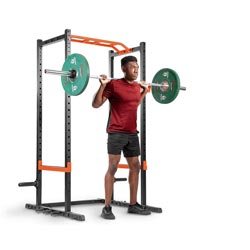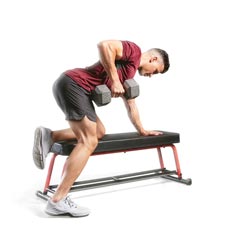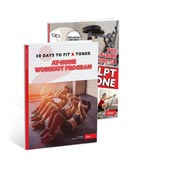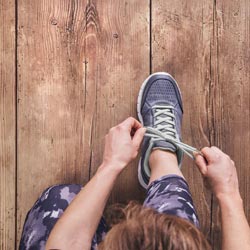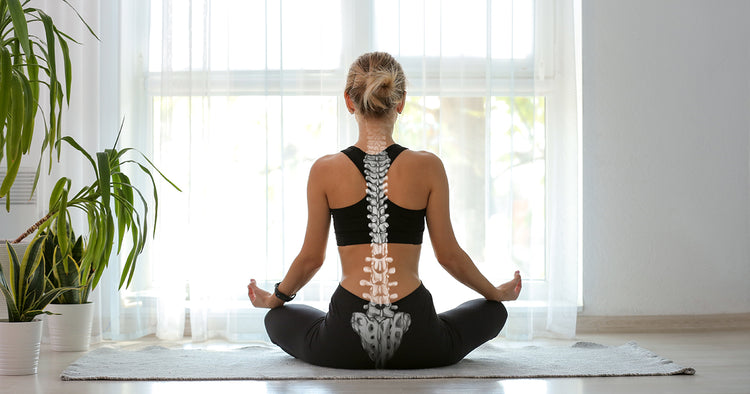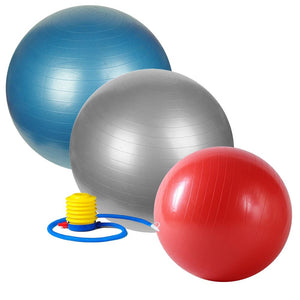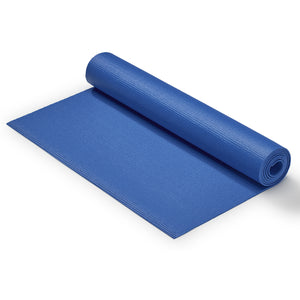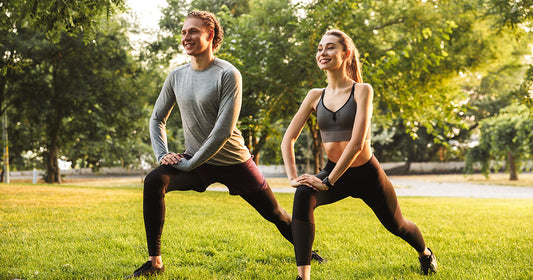Is back pain an ongoing crippling issue, that you deal with regularly? If so, don’t worry you’re not alone.
For the past 20 years, back pain (particularly lower back) has been the first leading cause of disability worldwide (1) and is the most common musculoskeletal condition (2). In the Western countries, 60%-80% of adults will at some point experience lower back pain (2).
If you’re ready to improve your spine health, the first step is learning more about your spine, how it works, and finally to equip yourself with some stretches and exercises to improve your mobility and strength and decrease pain.
Common Causes of Back Pain
There are a plethora of reasons as to why one might be suffering from back pain. Poor posture is often blamed for back pain, but many other factors can attribute to poor back and spine health.
Some of the other contributors to back and spinal pain include:
- Arthritic conditions such as Ankylosing Spondylitis (AS)
- Back strains and sprains
- Birth defects such as Spina Bifida
- Bone spurs (jagged edges on vertebrae that put pressure on the spinal cord and nerves)
- Curvature of the spine (scoliosis and kyphosis)
- Neuromuscular diseases such as Amyotrophic Lateral Sclerosis (ALS)
- Nerve injuries including Spinal Stenosis, Sciatica, and pinched nerves
- Osteoporosis
- Spinal cord injuries including spinal fractures, herniated disks, and paralysis
- Spine tumors and cancer
- Spine infections like meningitis and osteomyelitis (4).
It’s important to note that some back pain is chronic and may not be able to be addressed or improved through exercise. In some cases, exercise, even light exercise like stretching or mobility work can aggravate your back.
Before participating in any exercise program, always consult your doctor to be sure that any program or exercise is safe and appropriate for you, especially if you’re dealing with any pre-existing pain or any of the above-listed conditions.
What Are the Different Spine Segments?
Having an understanding of the different areas of your spine can help you have a better understanding of the way your back works and moves.
33 vertebrae make up five distinct spine segments. Starting at the neck and going down toward your buttocks, these segments include:
Cervical (neck): The top part of the spine has seven vertebrae (C1 to C7). These neck vertebrae allow you to turn, tilt and nod your head. The cervical spine makes an inward C-shape called a lordotic curve.
Thoracic (middle back): The chest or thoracic part of the spine has 12 vertebrae (T1 to T12). Your ribs attach to the thoracic spine. This section of the spine bends out slightly to make a backward C-shape called the kyphotic curve.
Lumbar (lower back): Five vertebrae (L1 to L5) make up the lower part of the spine. Your lumbar spine supports the upper parts of the spine. It connects to the pelvis and bears most of your body’s weight, as well as the stress of lifting and carrying items. Many back problems occur in the lumbar spine. The lumbar spine bends inward to create a C-shaped lordotic curve.
Sacrum: This triangle-shaped bone connects to the hips. The five sacral vertebrae (S1 to S5) fuse as a baby develops in the womb, which means they don’t move. The sacrum and hip bones form a ring called the pelvic girdle.
Coccyx (tailbone): Four fused vertebrae make up this small piece of bone found at the bottom of the spine. Pelvic floor muscles and ligaments attach to the coccyx.
With better understanding, you may be able to improve your mobility, flexibility, and even strength throughout your back to help manage your pain and improve how you feel and move throughout the day.
How to Improve Back & Spine Health
There are a few different ways to help contribute to improving the health of your back and spine.
It’s important to know that to improve the health of your spine and back and to see the results that you ultimately would like to see, you must work on each aspect of the program.
Those aspects are mobility, flexibility, strengthening, and some low to no-impact aerobic exercise.
Today, we’re going to look at some different mobility, flexibility, and strengthening exercises that you can do at home, to help make your back and spine happy again.
Cervical Spine (Neck)
Acute traumatic injuries to the spine can be life-threatening, particularly if the cervical region of the spinal cord is involved (3). It’s important to do everything possible, to minimize kind of potential injury.
To minimize those chances, first, you must strengthen the neck muscles that protect the cervical spine by resisting excessive hyperflexion, hypertension, hyperextension, or rotational forces.
Not only should the muscles around your neck be strong, but you should also have a full range of motion. Ideally, you should be able to place your chin on your chest and extend the head back until the face is parallel with the ceiling. There should be at least 40 to 45 degrees of lateral flexion and enough rotation to allow each chin to reach a level with each tip of the shoulder.
Mobility, flexibility, and strengthening are the three main focuses when it comes to rehabilitation of the cervical spine/neck. Here are some different exercises to help with that.
Cervical Mobility/Flexibility Exercises


Sit in a straight-backed chair and conduct extension, flexion, lateral flexion, & rotation in each direction should be held for a count of six seconds and repeated three times.
These should be done daily (2-3 times a day) and without pain. You should do each mobility exercise for 8 to 10 repetitions. Hold each endpoint for a six-second count with no force being added. If you need more of a stretch, place one hand on top of the head and/or above the ear while gently pulling the opposite side of the neck.
Lumbar Spine (Lower Back)
Low back pain is second only to foot problems in order of incidence in humans throughout their life span. Back problems are relatively common and are most often the result of either congenital (present at birth) or idiopathic (mechanical or traumatic) causes (3).
When it comes to the lumbar, maintaining proper segmental alignment of the body during standing, sitting, lying, running, jumping, and throwing is of utmost importance for keeping the body in good condition.
Low back pain can be prevented by avoiding unnecessary stresses and strains that are associated with everyday living. Stresses and strains can occur when standing, sitting, lying, working, or exercising.
Repeated strains or sprains in the low back can cause the supporting tissues to lose their ability to stabilize the spine and thus produce tissue laxity.
Basic conditioning should be made to produce a maximum range of motion in rotation and both lateral and forward flexion. Abdominal strength is essential to ensure proper postural alignment.
There are four things to focus on when rehabilitating the lumbar. Those four things include mobility, flexibility, strengthening, and core stabilization.
Lumbar Mobility
Joint mobilization of the lumbar spine may be used to improve joint mobility or to decrease joint pain by restoring to the joint accessory movements that will help achieve a nonrestricted, pain-free range of motion.
Trunk rotation, trunk lateral side bends, trunk flexion (forward fold), and trunk extensions are a few different mobility movements that you can perform to help lengthen the deep superficial back muscles and the contraction of the abdominal muscles and hip flexors.
Lumbar Flexibility
Back pain can be caused by tightness or lack of flexibility in several different groups related to the movement of the low back.
The following muscle groups should be stretched when dealing with back pain (particularly lower back). Those muscles are low back extensors, lumbar rotators, hip abductors, lumbar lateral flexors, hip adductors, hip rotators, hip flexors, hamstrings, and glutes. Below are a few different stretches to help with your back flexibility.
Butterfly Stretch
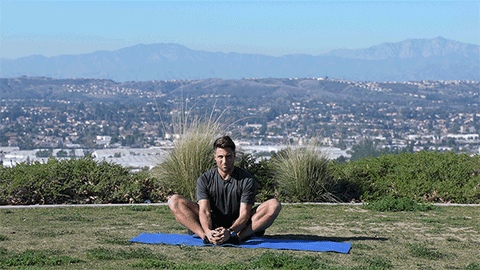
Hamstring Stretch

Prone Back Stretch

Lumbar Strength
Lumbar strength and endurance are important for maintaining good posture and alignment. Below, I’ve shared a few exercises for strengthening your lumbar spine.
Prone Trunk

Alternating Leg Arm Left

Neuromuscular Control (Core Stabilization)
Core stabilization involves maintaining a controlled range of motion that varies with the position and activity that’s being performed. The first step in core stabilization is to learn to control the pelvis in a neutral position.
Stabilizing your core, dynamic abdominal bracing, and maintenance of a neutral position are all aspects of a technique that can be used to increase the stability of the spine and the lumbopelvic-hip complex.
Increasing stability helps maintain the spine and pelvis in a comfortable and acceptable mechanical position that will control the effects of repetitive microtrauma and protect the structures in the back from further damage.
Controlling your abdominal muscle also gives you the ability to stabilize the trunk and control posture (3). Here are a few core exercises to help strengthen your abdominal muscle.
Core Exercises
Half Sit-Up

3 Point Abs

Bridge with Extended Leg

In Closing
A general exercise program that combines muscular strength, flexibility, and aerobic fitness is beneficial for the rehabilitation of non-specific chronic low back pain.
Increasing core muscular strength can assist in supporting the lumbar spine. Improving the flexibility of the muscle tendons and ligaments in the back increases the range of motion and assists with the patient’s functional movement. Aerobic exercise increases the blood flow and nutrients to the soft tissues in the back, improving the healing process and reducing the stiffness that can result in back pain.
As always be sure to consult your doctor before participating in an exercise program to ensure the movements are safe and appropriate for you.

